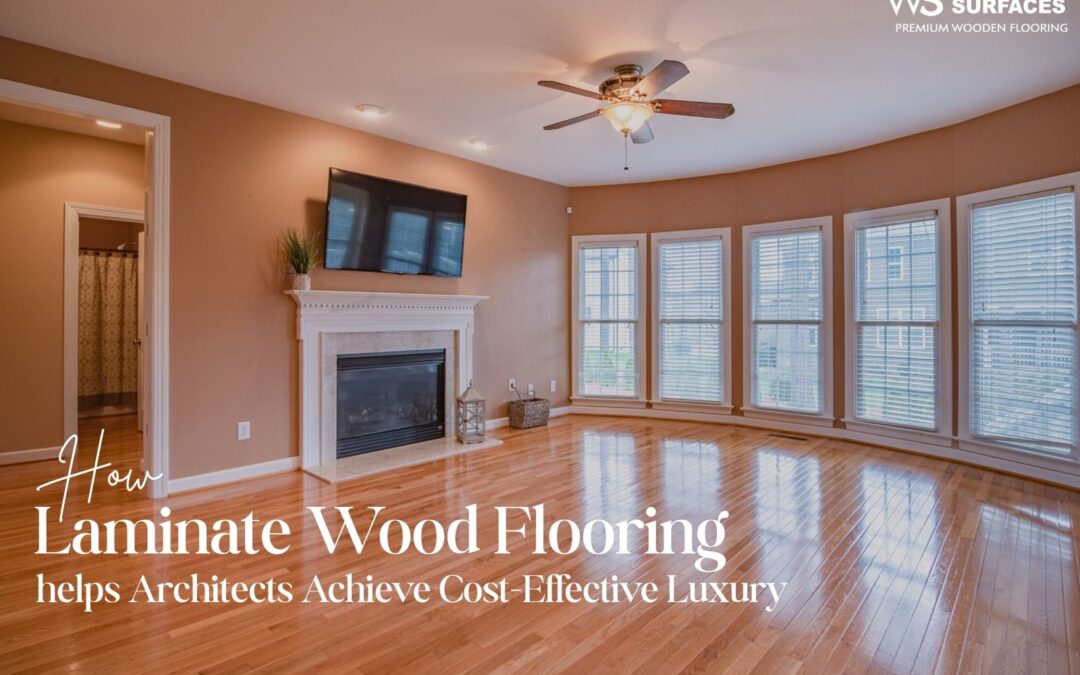For architects and interior designers, the ongoing challenge is achieving elegance without exceeding financial limits. As clients increasingly request upscale, polished interiors, designers must work within budgetary constraints. Laminate wood flooring has repeatedly proven to be a smart and stylish choice. This versatile option allows designers to deliver elegance without compromising financial feasibility, offering a unique blend of cost-effective luxury flooring that appeals to discerning clients.
Understanding Laminate Wood Flooring
Laminated wood flooring is a manufactured product that mimics the natural beauty of hardwood floors while providing enhanced durability and affordability. Unlike solid wood, laminate comprises multiple layers, including a wear layer, design layer, core layer, and backing layer. This structure gives it resilience against scratches, moisture, and heavy foot traffic, making it an ideal choice for both residential and commercial spaces. Architects looking for flooring for projects find that laminate provides a reliable canvas to achieve luxurious aesthetics at a fraction of the cost of traditional hardwood.
One of the standout features of laminate is its ability to replicate authentic wood textures through high-definition printing technology. This wood-look laminate can convincingly emulate exotic hardwoods, such as oak, walnut, or maple, giving interiors a high-end finish that is often indistinguishable from real wood. For architects, this opens a range of creative possibilities, enabling the exploration of diverse design palettes without being restricted by budgetary limitations.
The Appeal of Cost-Effective Luxury Flooring
Cost remains a crucial factor in architectural projects, particularly in large-scale residential, commercial, or hospitality settings. Low-cost premium flooring options like laminated flooring allow architects to strike a balance between luxurious appeal and budget management. High-end materials are often visually striking but come with high costs and complex installation requirements. Laminate, in contrast, provides a simpler installation process, reduced maintenance, and long-term durability while still achieving an upscale aesthetic.
From a client perspective, cost-effective luxury flooring demonstrates the ability to make impactful design decisions without exceeding financial boundaries. Laminate floors, with their wide array of finishes and colors, enable the creation of signature spaces—grand hallways, cozy lounges, or sophisticated offices—that convey elegance and modernity. The ability to deliver this level of refinement economically is particularly valuable for architects managing multiple projects with varying budgets.
Practical Benefits for Architectural Projects
Beyond aesthetics and cost, laminated wooden flooring provides practical advantages that make it a favorite in architectural design. Its durability ensures that spaces subject to high foot traffic, such as commercial offices or public interiors, maintain their visual appeal over time. The wear layer protects against scratches and dents, while the backing layer offers stability and moisture resistance, contributing to the longevity of the installation.
Moreover, architectural flooring solutions now extend to environmentally conscious choices. Many laminate products are made using sustainable materials, including recycled wood fibers and eco-friendly resins. Architects seeking to align their projects with green building certifications, such as LEED, can utilize laminate to achieve environmentally responsible designs that appeal to modern clients.
The flexibility of laminate also supports creative installations. Patterns such as herringbone, chevron, or wide-plank arrangements can transform ordinary spaces into architecturally engaging environments. This adaptability allows designers to experiment with spatial perception, adding depth and character without inflating costs.
Laminate as a Low-Maintenance Luxury Option
Maintenance is often an overlooked aspect of architectural design, yet it plays a crucial role in client satisfaction. Traditional hardwood may require regular polishing, refinishing, or treatments to maintain its luster, creating long-term commitments for property owners. In contrast, wood-look laminate provides a durable, low-maintenance alternative that maintains its visual appeal with minimal effort.
This practical edge positions laminate as a forward-thinking choice for architects designing multi-unit residences, offices, or hospitality spaces. The ease of cleaning, resistance to stains, and longevity of laminate ensure that the flooring continues to convey a sense of luxury long after installation. Clients enjoy the visual richness of wood floors without the challenges of high-maintenance materials, reinforcing the perception of smart, cost-conscious design decisions.
Enhancing Design Flexibility
Another advantage of laminated wooden flooring in architectural projects is its design flexibility. Architects are no longer limited to conventional wood hues or textures; laminate offers an expansive palette of styles, grains, and finishes. From light, sun-kissed oak to deep, dramatic walnut tones, designers can tailor spaces to their clients’ vision while maintaining a unified, elegant aesthetic.
Additionally, laminate can be combined with other flooring types, such as tile or carpet, to create visually dynamic transitions. This versatility allows architects to emphasize spatial hierarchy, highlight focal points, and guide movement through a space with both functional and aesthetic intent. Such options are invaluable in delivering comprehensive architectural flooring solutions that satisfy both practical and design-oriented objectives.
Cost-Efficiency Without Compromising Luxury
Ultimately, laminated wood flooring exemplifies the principle of achieving luxury through thoughtful resource allocation. By leveraging low-cost premium flooring materials, architects can offer interiors that resonate with opulence while staying within budget. Laminate’s combination of realistic wood aesthetics, durability, and ease of installation ensures that projects can meet high design standards without escalating costs unnecessarily.
In conclusion, laminated flooring provides a compelling solution for architects seeking cost-effective luxury flooring. It bridges the gap between high-end design aspirations and financial pragmatism, offering a resilient, versatile, and visually appealing alternative to traditional hardwood. With the ability to emulate a wide range of wood textures, withstand rigorous use, and align with eco-conscious practices, laminate empowers architects to craft spaces that are both stunning and economically responsible. By integrating wood-look laminate into their projects, architects can redefine what it means to achieve luxury—without compromising on practicality or budget.

